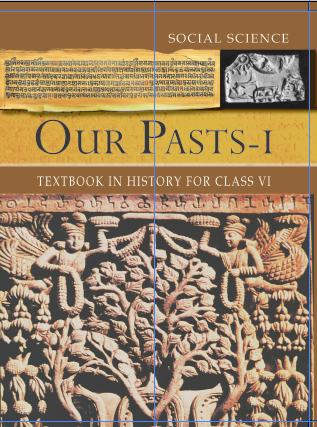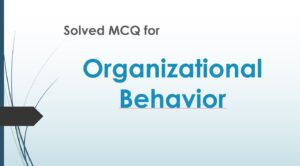Class 6 - Social Science : Our Past I
Chapter 7 : Kingdoms, Kings and an Early Republic

Top Block 1
NCERT Solutions Class 6 Social Science Our Past New Questions and Ideas
1. Describe the ways in which the Buddha tried to spread his message to the people.
Answers : The Buddha preached about life being full of suffering and unhappiness. He spoke of ‘tanha’ the desire to have more. He taught about ‘Karma’our actions which affect us in the current life and also in the later lives. He taught people to be kind and to respect the lives of others. He used the language of the ordinary people, Prakrit, to talk to them.
2. Write whether true or false:
(a)The Buddha encouraged animal sacrifices.
(b)Samath is important because it was the place where the Buddha taught for the first time.
(c)The Buddha taught that ‘Karma’ has no effect on our lives.
(d)The Buddha attained enlightenment at Bodh Gaya.
(e)Upanishadic thinkers believed that the ‘atman’ and ‘brahman’ were ultimately one.
Answers : (a) False, (b) True, (c) False, (d) True, (e) True.
3. What were the questions that Upanishadic thinkers wanted to answer?
Answers : Upanishadic thinkers wanted to know about life after death. Some wanted to know why sacrifices should be preformed. They felt there had to be something permanent in the universe that lasted even after death. Their ideas are recorded in the Upanishads.
4. What were the main teachings of the Mahavira?
Answers : Mahavira taught a simple doctrine: men and women who wish to know the truth must leave their homes. Mahavira told them to follow ‘ahimsa’—not hurting any living being.
5. Why do you think Armgha’s mother wanted her to know the story of the Buddha?
Answers : Buddha was the founder of Buddhism and he was the Wise One. His stories could be inspirational and motivational to students. So Anagha‘s mother wanted her to know his story.
6. Do you think it would have been easy for slaves to join the ‘sangha’? Give reasons for your answer.
Answers : Slaves were allowed to join ‘sanghas’. Those who followed Buddhism did not believe in dividing the society and Buddha taught that all humans are equal.
7. Make a List of at least five ideas and questions mentioned in this lesson. Choose three from the List and discuss why you think they are important even today.
Answers : Ideas and questions mentioned in the lesson and their relevance today
- Life is full of suffering and unhappiness. It is due to our unfulfilled desires. This is true today since most people are not satisfied with what they have. They resort to unfair means out of greed and end up in suffering and trouble.
- Our actions (‘Karma’) affect us in our current life as well as next life.
- We should not hurt or kill any living being, according to Mahavira. This is important because every living being has a desire to live.
- Thinkers wanted to know about life after death and they wanted to know why sacrifices should be performed. Sacrifices are not justified since living being should be killed.
- Upanishadic thinkers also felt that something was permanent in the universe and it lasted even after death.
8. Find out more about men and women who renounce the world today. Where do they live, what kinds of clothes do they wear, what do they eat? Why do they renounce the world?
Ans: Prepare the answer with the help of your subject teacher.
I. MULTIPLE CHOICE QUESTIONS
Choose the correct option to complete the statements given below:
(i) Buddhism was found by ………….
(a) Mahavira (b) Zoroaster
(c) Ramkrishna Paramhansa (d) none of these.
(ii) Jainism was founded by ……….
(a) Mahavira (b) Buddha
(c) Zoroaster (d) Tao.
(iii) The Vinaya Pitaka is a sacred text of…………..
(a) the Buddhists (b) the Jainas
(c) the Hindus (d) the Sikhs.
(iv) Buddha used ………. to communicate with people.
(a) Prakrit (b) Sanskrit
(c) Urdu (d) Hindi.
(v)The universal soul has been referred to as
(a) ‘atman’ (b)‘brahman’
(c) ‘Karma’ (d) ‘tanha’.
(vi) A woman Upanishadic thinker was
(a) Jabali (b) Satyakama Jabala
(c) Urmila (d) Gargi.
(vii) Mahavira was the prince of the
(a) Lichchhavis (b) Lumbini
(c) Kusinara (d) Magadha.
Answers : (i)—(d), (ii)—(a), (iii)—(a), (iv)—(a), (v)—(b), (vi)—(d), (vii)—(a).
II.FILL IN THE BLANKS
Fill in the blanks with appropriate words to complete each sentence.
(i) The Buddha belonged to a small ‘gana’ called …………….
(ii) The Buddha got enlightenment at …………..
(iii) The Buddha used the word ……… for desire of worldly things.
(iv) Satyakama Jabala was the son of a ………… woman called Jabali.
(v) The Prakrit spoken in Magadha was known as ……………
(vi)Jainism was initially supported by only the …………..
(vii).The teachings of Mahavira were written down for the first time about years ago.
(viii) The earliest ‘Viharas’ were made of………… and of……..
Answers : (i) Sakya (ii) Bodh Gaya
(iii) ‘tanha’ (iv) slave
(v) Magadhi (vi) traders
(vii) 1500 (viii) wood, brick.
Mddle block 1
III. TRUE/FALSE
State whether these sentences are true (T) or false (F).
(i) The original name of the Buddha was Siddhartha.
(ii)The Buddha passed away at Kusinara.
(iii)The Buddha believed ‘tanha’ could be removed by following moderation in everything.
(iv)The Upanishads are part of the Rigveda.
(v) Mahavira was a prince in the Sakya ‘gana’.
(vi) The Jaina were supposed to lead luxurious lives.
(vii) Both Jaina and Buddhist monks went from place to place throughout the year and taught people.
Answers : (i)—T, (ii)—T, (iii)—T, (iv)—F, (v)—F, (vi)—F, (vii)—T.
IV. MATCHING SKILL
Match the items in column A correctly with those given in column B.
| Column A | Column B |
|---|---|
| 1. Enlightenment of the Buddha | A. Valabhi |
| 2. Death of The Buddha | B. Kusinara |
| 3. First Sermon of the Buddha | C. Sarnath |
| 4. Place where the Jaina teachings were first written | D. Bodh Gaya |
| Column A | Column B |
|---|---|
| 1. Enlightenment of the Buddha | D. Bodh Gaya |
| 2. Death of The Buddha | B. Kusinara |
| 3. First Sermon of the Buddha | C. Sarnath |
| 4. Place where the Jaina teachings were first written | A. Valabhi |
V.VERY SHORT ANSWER TYPE QUESTIONS
1. What was the atm of the thinkers in the society? [V. Imp.]
Answers : The thinkers wanted to understand the ongoing changes in the society and to tiy to find out the true meaning of life.
2. What did the Buddha do after his enlightenment?
Answers : The Buddha went to Samath and taught for the first time. He spent the rest of his life travelling and teaching people.
3. What was the ‘Karma’ according to the Buddha? [V. Imp.]
Answers : ‘Karma’ refers to our actions—good or bad.
4. How did the Buddha connect to everyone in the society?
Answers : The Buddha used Prakrit so that everyone could understand his teachings.
5. What sort of people became Upanishadic thinkers?
Answers : The Upanishadic thinkers consisted of men, especially ‘brahmins’ and ‘rajas’. There were exceptions, however.
6. What did Mahavira do to attain enlightenment? [Imp.]
Answers : Mahavira left home at the age of thirty. Then he spent twelve years in forest and led a hard and lonely life. Then he got enlightenment.
7. State two basic rules of Jainism
Answers : (a) The Jains had to beg for food.
(b) They were to be absolutely honest.
8. Name the book which gives the rules of the Buddhist ‘Sangha’.
Answers : The Vinaya Pitaka gives the rules made for the Buddhist ‘Sangha’.
9. Who all joined the ‘Sangha’?
Answers : Those who joined the ‘sangha’ included ‘Brahmins’, Kshatriyas’, merchants, labourers, slaves, etc.
10. How did monks take shelter in the rainy season?
Answers : The monks got temporary shelters built during rainy season, or they lived in caves.
VI. SHORT ANSWER TYPE QUESTIONS
1. Write a short note on the Buddha’s teachings. [V. Imp.]
Answers : The Buddha said that life is full of suffering and unhappiness. He said that its cause lies in our unfulfilled desires and dissatisfaction (‘tanhaj. He suggested moderation in everything as a solution. He told people to be kind and to respect each and every life. Our actions (‘Karma’) affect us in this life and the further ones. The Buddha encouraged people to think for themselves rather than simply accept his teachings.
2. Write a short note on Mahavira’s teachings.
Answers : Mahavira said that those who wish to know the truth must leave their homes. People must follow ‘ahimsa’. The Jaines had to leave very simple lives and be very honest throughout. The men had to give up clothes.
3. Describe how Jainism spread in other parts of India.
Answers : Jainism was initially supported mainly by traders. Farmers found it difficult to follow the rules since they required to kill the insects affecting crops. Over centuries, Jainism spread to different parts of north India, and to Gujarat, Tamil Nadu and Karnataka.
4. What does the Vinaya Pitaka teU. about ‘sangha’? [V. Imp.)
Answers : From the Vinaya Pitaka, we know that there were separate branches for men and women in the Buddhist ‘sangha’. Children were supposed to take permission of their parents and slaves had to ask for permission from their masters to join it. Women had to ask their husbands. Those who lived in the ‘sangha’ had to lead very simple lives—meditating, travelling and begging. They taught others and helped each other.
VI.LONG ANSWER TYPE QUESTIONS
1. Describe Buddha’s life in brief. [V. Imp.]
Answers : The Buddha (original name—Siddhartha Gautama) belonged to a small ‘gana’ and was a kshatriya. At an early age, he left the comforts of home and went in search of knowledge. He wandered for several years, and met and discussed with other contemporary thinkers. He meditated for several days under a ‘peepaT tree at Bodh Gaya in Bihar. Here, after meditation, he attained enlightenment. This gave him the name ‘the Buddha’ (the Wise One). He went to Samath and taught people. He travelled and preached for the rest of his life. He spoke of ‘tanha’, ‘Karma’, etc. He died at Kusinara.



